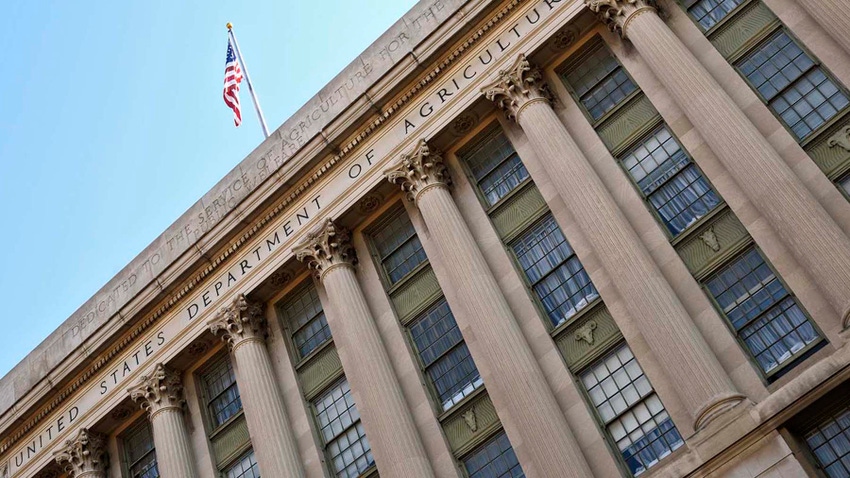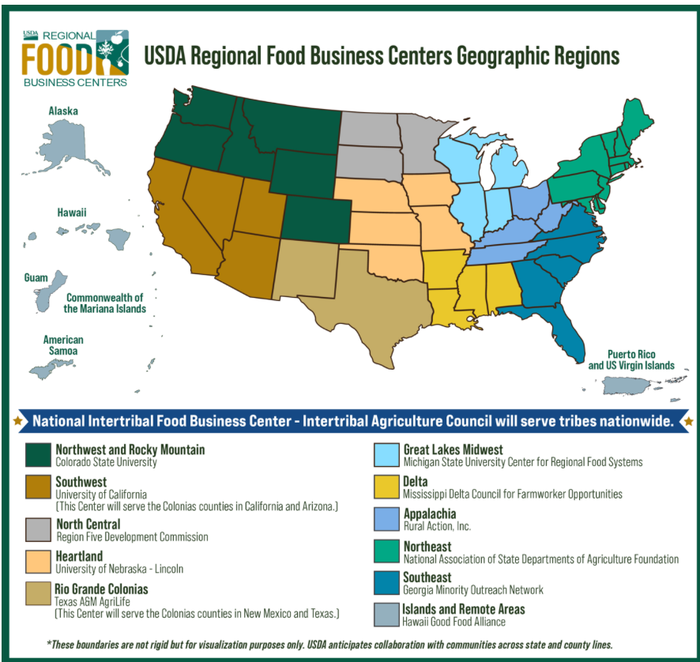
USDA announced the creation of 12 new regional food business centers tasked with helping producers better navigate federal state and local resources and access new markets. In conjunction with the announcement, the agency also unveiled plans for a $420 million Resilient Food Systems Infrastructure Program to fund new processing and distribution projects.
According to USDA officials, these “innovative” projects will build resilience across the middle of the supply chain while strengthening local and regional food systems. The agency’s Agricultural Marketing Service will partner with states and territories to enact RFSI projects.
“The Biden-Harris administration is committed to transforming our food system to one that offers new market opportunities to small and mid-sized farming operations through a strengthened local and regional food system,” Agriculture Secretary Tom Vilsack said. “The Regional Food Business Centers, along with investments through the Resilient Food Systems Infrastructure Program will create new and expanded local market opportunities which will improve farm income, create good paying jobs and build greater resilience in our overall food system.”
USDA began planning for the regional food business centers last September when it announced a $400 million grant program. Its goal was to create at least six regional centers that would offer local and regional food systems coordination, technical assistance and capacity building services. At the time USDA said the centers would include a national tribal center as well a center along the U.S.-Mexico border, the Mississippi Delta and Appalachia. These regions were identified as communities with high needs and/or limited resources.
“USDA recognizes that local and regional food systems are essential to the overall food supply chain and the new Regional Food Business Centers are the cornerstone of our efforts to support them,” Under Secretary for Marketing and Regulatory Programs Jenny Lester Moffitt said. “The resources and diverse knowledge offered through the Centers will make the opportunities available through dozens of USDA programs more accessible to small and mid-sized producers and food and farm businesses.”
After evaluating applications received between September and November 2022, USDA announced the following 12 regional centers and their lead organizations:
Appalachia USDA Regional Food Business Center, Rural Action Inc.
Delta USDA Regional Food Business Center, Mississippi Delta Council for Farmworker Opportunities
Great Lakes Midwest USDA Regional Food Business Center, Michigan State University
Heartland USDA Regional Food Business Center, University of Nebraska
National Intertribal Food Business Center, Intertribal Agriculture Council
Island and Remote Areas USDA Regional Food Business Center, Hawaii Good Food Alliance
North Central USDA Regional Food Business Center, Region Five Development Commission
Northeast USDA Regional Food Business Center, NASDA Foundation
Northwest and Rocky Mountain USDA Regional Food Business Center, Colorado State University
Rio Grande Colonias USDA Regional Food Business Center, Texas A&M AgriLife
Southeast USDA Regional Food Business Center, Georgia Minority Outreach Network
Southwest USDA Regional Food Business Center, University of California

About the Author(s)
You May Also Like






